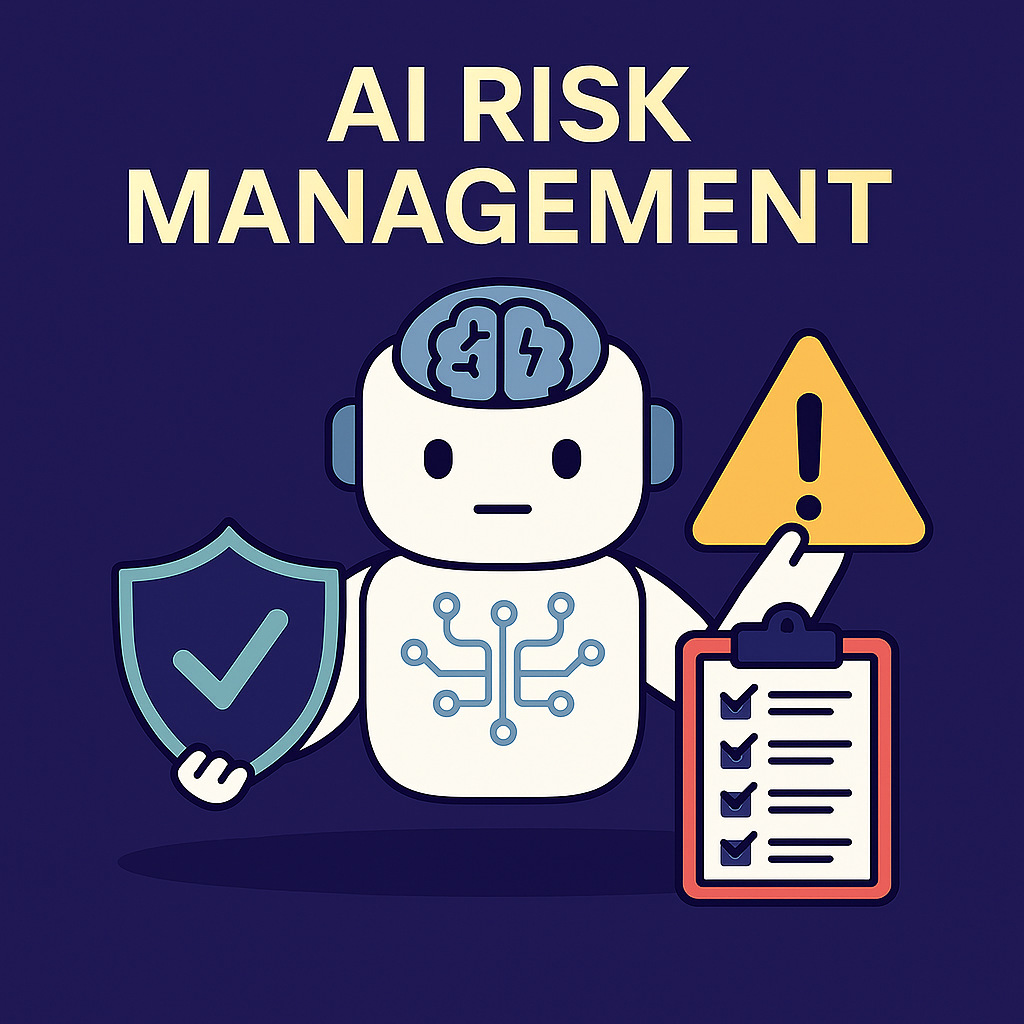Artificial Intelligence (AI) practices is transforming industries across the globe, offering unprecedented opportunities for innovation and efficiency. However, with these advancements come significant risks that must be managed effectively. The National Institute of Standards and Technology (NIST) has developed the AI Risk Management Framework (AI RMF) to help organizations navigate these challenges
What is AI Risk Management?
Understanding AI Risks and Their Impact
AI systems can introduce various risks, including biases in decision-making, security vulnerabilities, and unintended consequences. These AI security risks can lead to financial losses, reputational damage, and legal liabilities. Effective AI risk management involves identifying, assessing, and mitigating these potential issues to ensure that advanced AI systems operate as intended and align with organizational goals. National Law Review+2Financial Times+2Clifford Chance+2
The Importance of AI Risk Management
Implementing robust AI risk management practices is crucial for building trust in use of AI systems. It ensures compliance with regulations, protects against potential harms, and promotes the responsible use of AI technologies. By proactively managing risks, organizations can harness the benefits of AI while minimizing negative outcomes.
Key Components of an AI Risk Management Framework
A comprehensive AI risk management framework typically includes:
- Risk Identification: Recognizing potential risks associated with AI systems.
- Risk Assessment: Evaluating the likelihood and impact of identified risks.
- Risk Mitigation: Implementing strategies to reduce or eliminate risks.
- Monitoring and Review: Continuously tracking AI systems to detect new risks and assess the effectiveness of mitigation measures.
How to Implement an AI Risk Management Framework?
Steps to Adopt the NIST AI Risk Management Framework
The NIST AI RMF provides a structured approach to adopting AI risk management. Organizations can adopt this framework by: NIST AI Challenge Problems+7robustintelligence.com+7download.pli.edu+7
- Mapping: Understanding the context in which AI systems operate.
- Measuring: Assessing AI system performance and associated risks.
- Managing: Implementing risk mitigation strategies.
- Governing: Establishing policies and procedures for AI risk management.
Best Practices for Implementing AI Risk Management
- Stakeholder Engagement: Involving all relevant parties in the risk management process.
- Transparency: Ensuring that AI systems are explainable and decisions can be understood.
- Accountability: Assigning clear responsibilities for managing AI risks.
- Continuous Improvement: Regularly updating risk management practices based on new insights and developments.
Challenges in Implementing AI Risk Management Frameworks
Organizations may face challenges such as limited resources, lack of expertise, and evolving regulatory landscapes. Addressing these challenges requires commitment from leadership, investment in training, and staying informed about best practices and regulatory changes.
What are the Potential Risks Associated with AI Systems?
Types of AI Risks: Security and Operational
- Security Risks: AI systems can be vulnerable to cyberattacks, data breaches, and adversarial inputs.
- Operational Risks: These include system failures, inaccurate outputs, and unintended behaviors that can disrupt business operations.
Evaluating Risks in AI Development and Deployment
Risk evaluation involves assessing the potential impact and likelihood of risks during the AI system’s lifecycle. This includes analyzing data quality, algorithm performance, and system integration. Qualysec
Mitigating Risks in AI Technologies
Risk mitigation strategies may involve implementing robust security measures, conducting regular audits, and establishing fail-safes to prevent or minimize harm from AI system failures.
How Does the EU AI Act Affect AI Risk Management?
Overview of the EU AI Act and Its Implications
The EU AI Act introduces a comprehensive regulatory framework for AI, categorizing systems based on risk levels and imposing requirements accordingly. High-risk AI systems are subject to strict obligations, including risk management, data governance, and transparency. ferma.eu
Aligning with the EU AI Act for Effective Risk Management
Organizations operating in the EU or dealing with EU citizens’ data must align their AI risk management practices with the EU AI Act to ensure compliance and avoid penalties.
Compliance Challenges with the EU AI Act
Compliance challenges include understanding the classification of AI systems, implementing necessary controls, and maintaining documentation to demonstrate adherence to the Act’s provisions.
What is the Role of AI Governance in Risk Management?
Establishing Governance Structures for AI Technologies
AI governance involves setting up frameworks and policies to oversee AI development and deployment. This includes defining roles, responsibilities, and processes to ensure ethical and responsible AI use.
AI Governance Best Practices for Organizations
- Ethical Guidelines: Developing principles to guide AI development.
- Compliance Monitoring: Regularly reviewing AI systems for adherence to laws and policies.
- Stakeholder Communication: Engaging with stakeholders to address concerns and expectations.
Ensuring Ethical AI through Governance
Ethical AI governance ensures that AI systems respect human rights, promote fairness, and do not cause harm. This involves integrating ethical considerations into every stage of the AI lifecycle.
How to Evaluate AI Systems for Risk Management?
Risk Assessment Techniques for AI Models
Techniques include scenario analysis, stress testing, and sensitivity analysis to understand how AI systems perform under various conditions and identify potential vulnerabilities.
Tools and Metrics for Evaluating AI Risks
Organizations can use tools like model interpretability frameworks, bias detection algorithms, and performance metrics to assess AI risks effectively.
Continuous Monitoring and Improvement of AI Systems
Continuous monitoring involves tracking AI system performance, updating models with new data, and refining risk management strategies to adapt to changing environments and emerging threats.
For a deeper understanding of AI risk management and practical guidance on implementing AI responsibly, consider reading AI First, Human Always by Sandy Carter. This book offers insights into adopting an AI-first mindset while prioritizing human values and ethics. Learn more at aifirstbiz.com.
